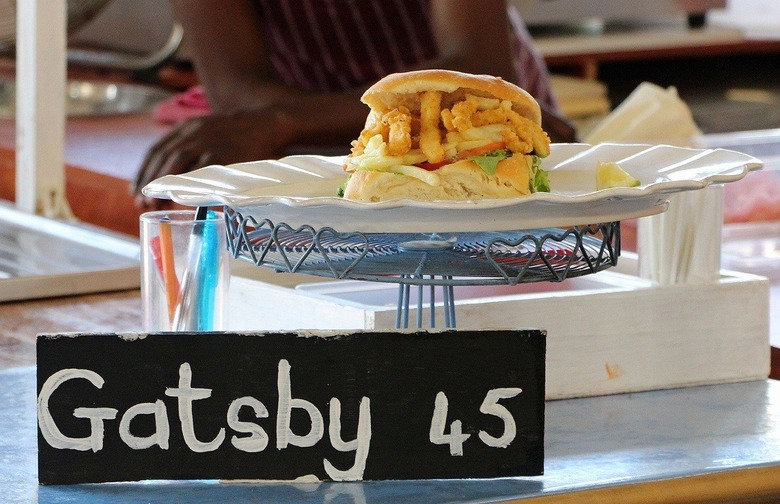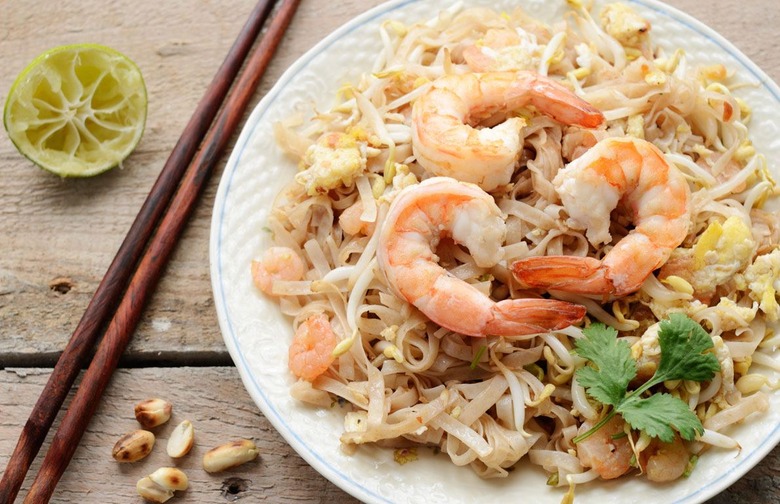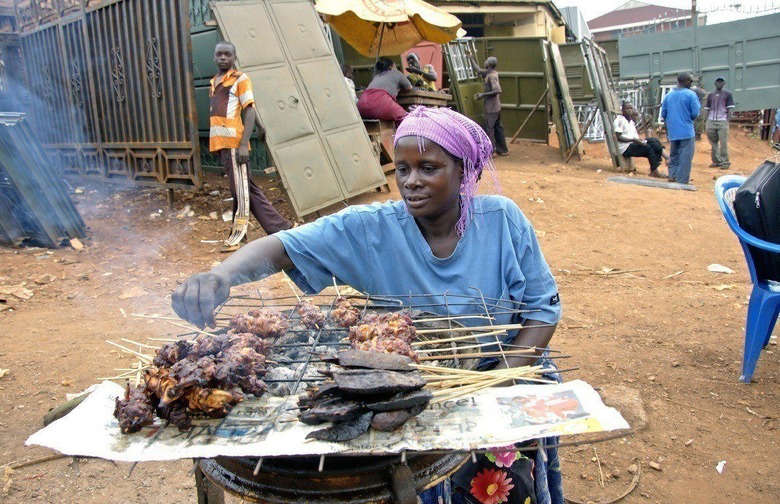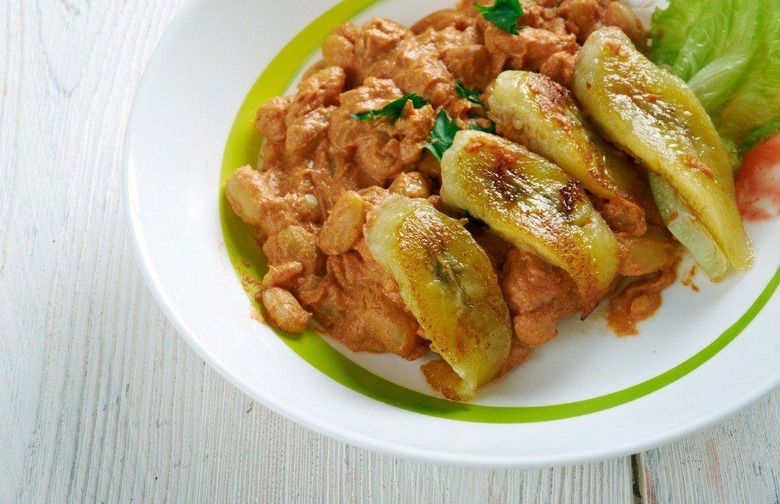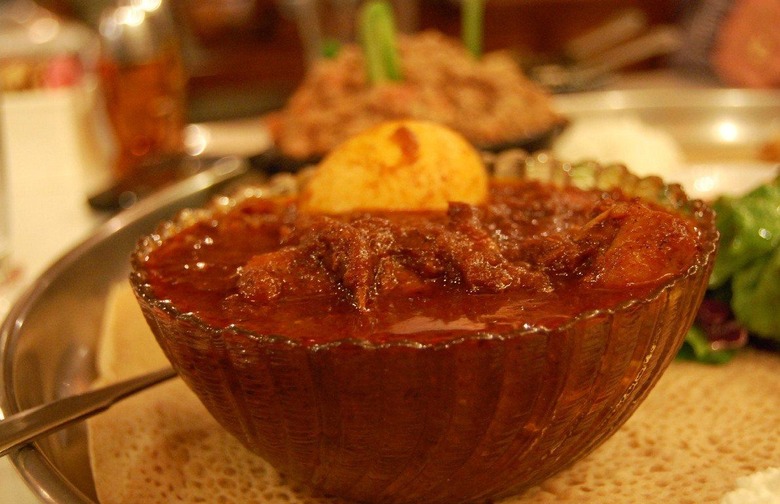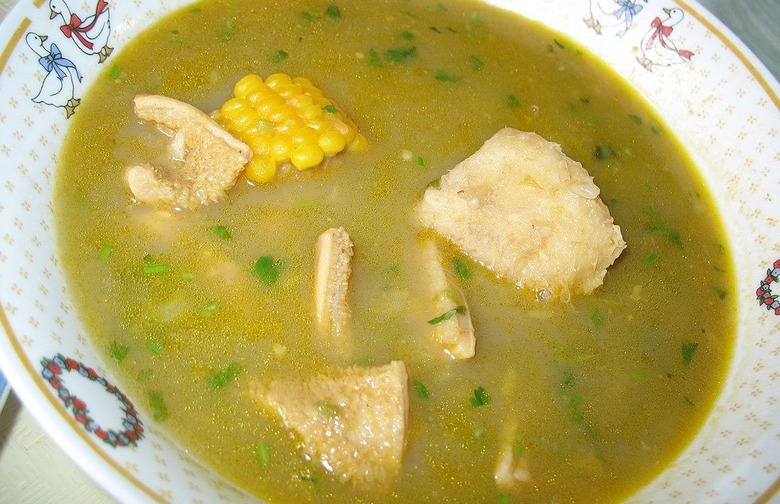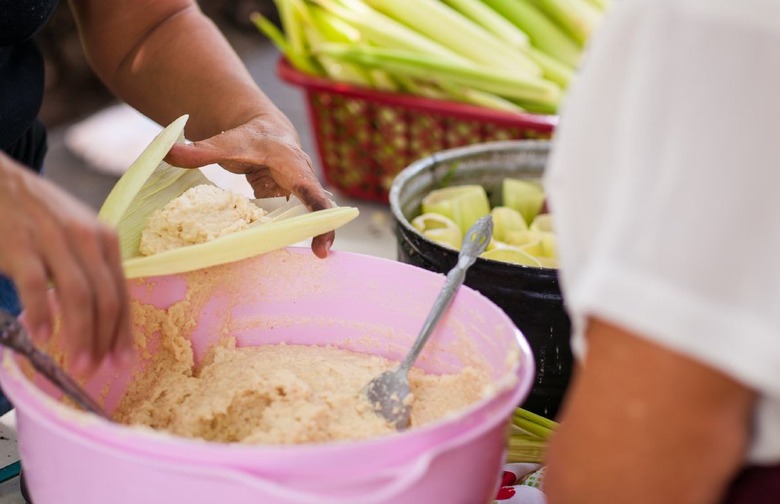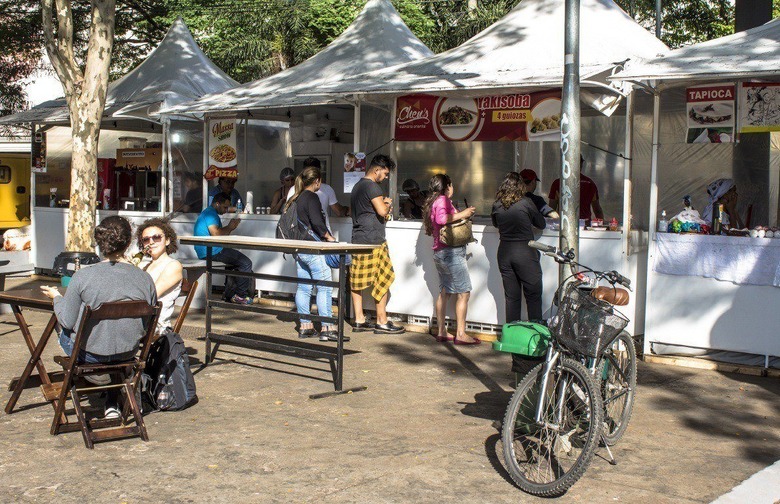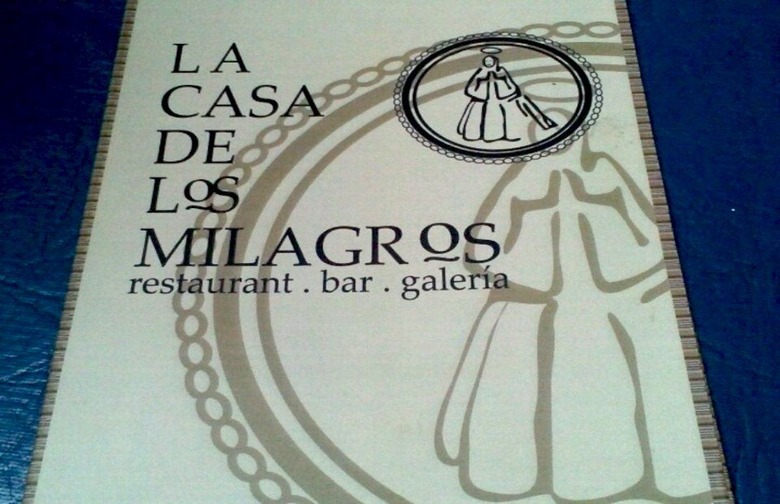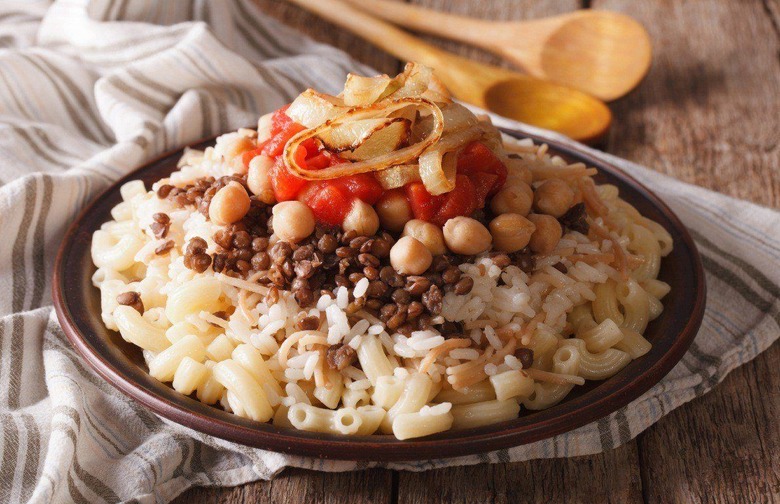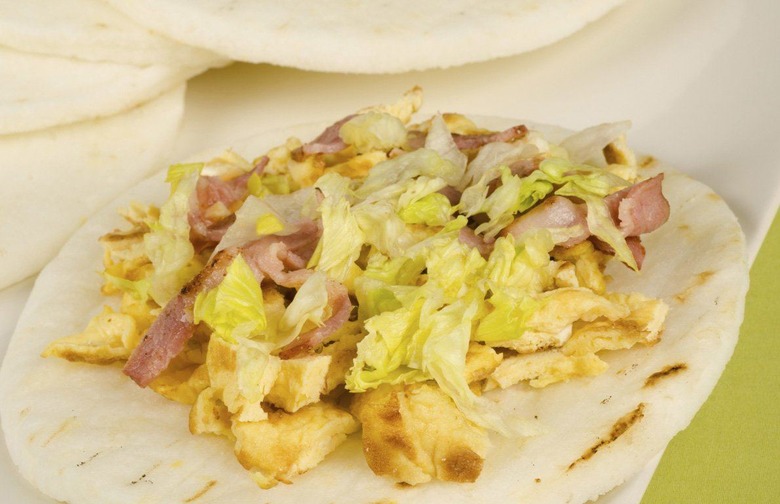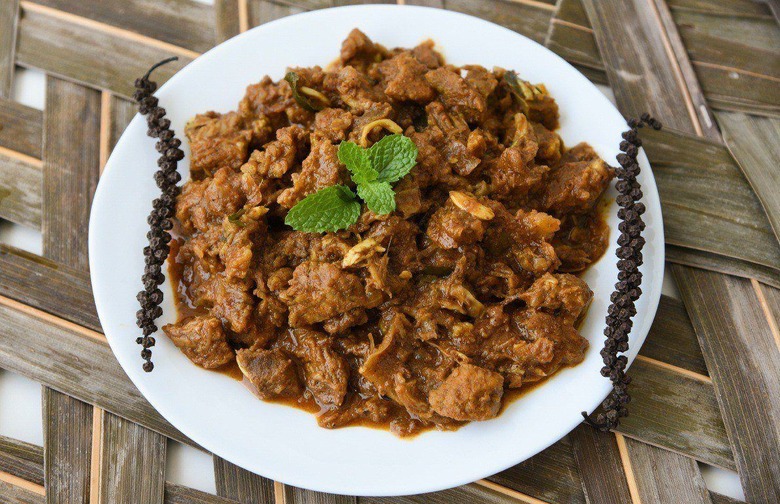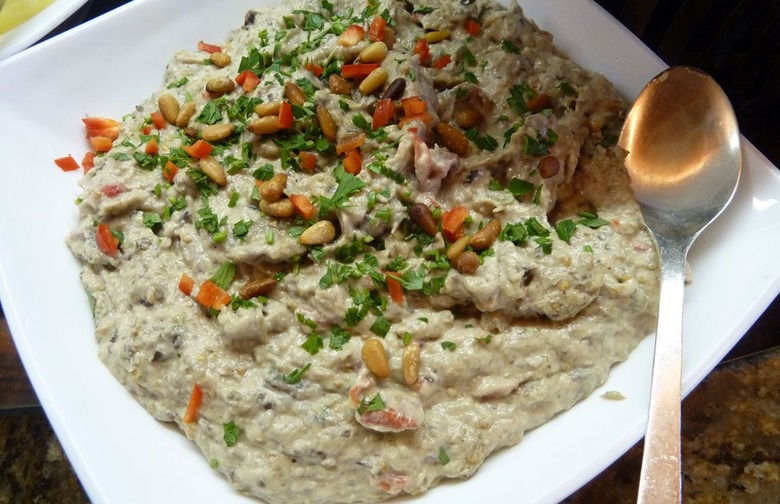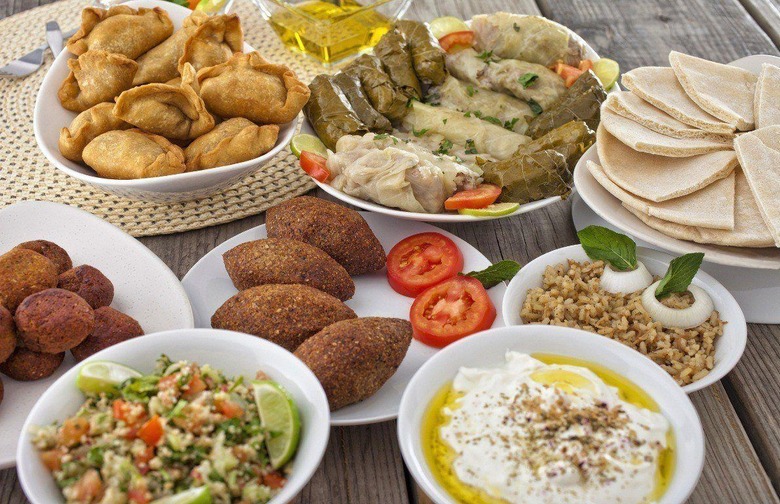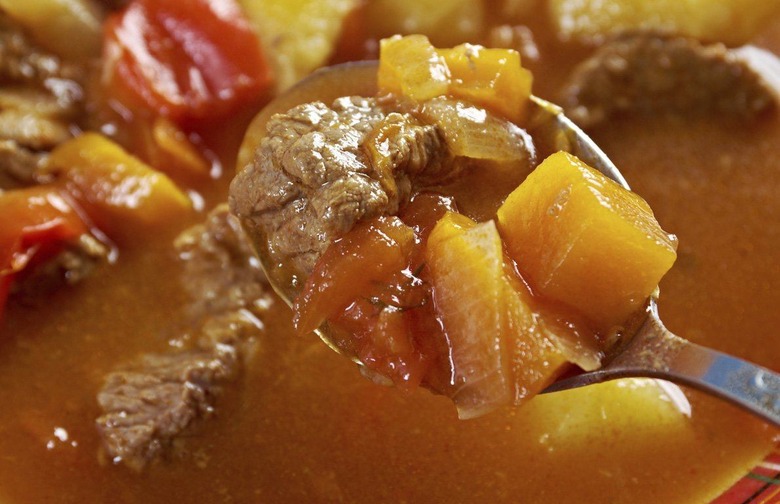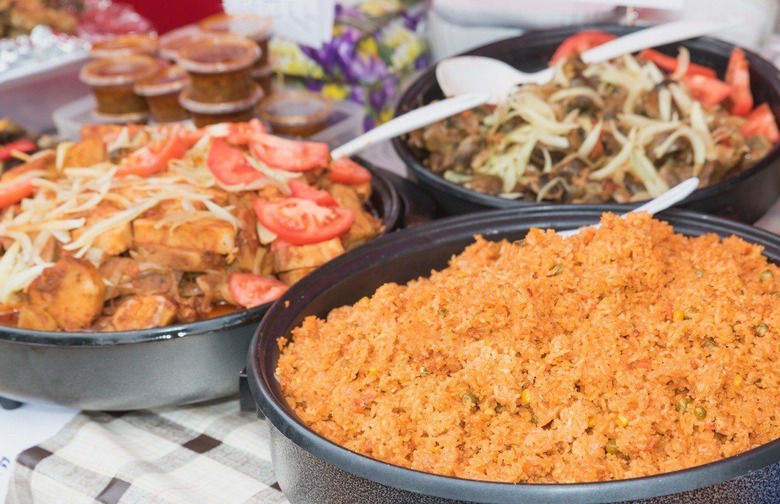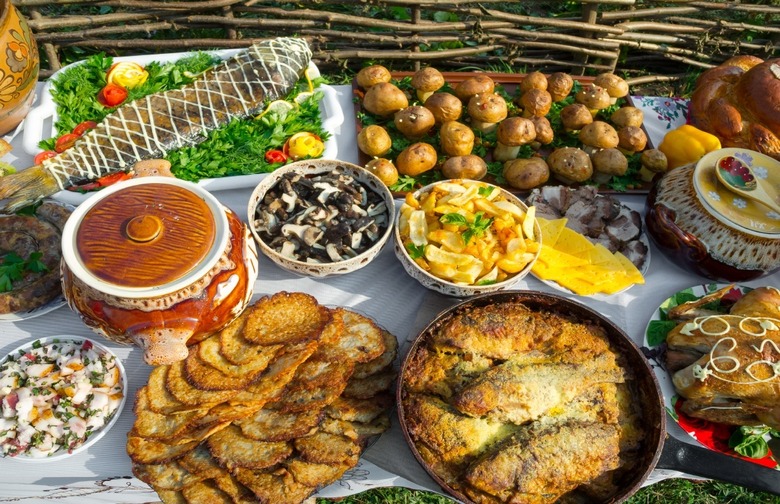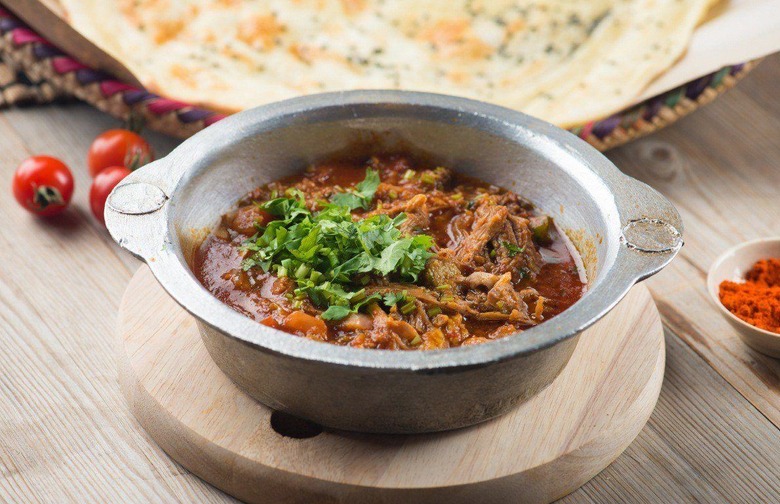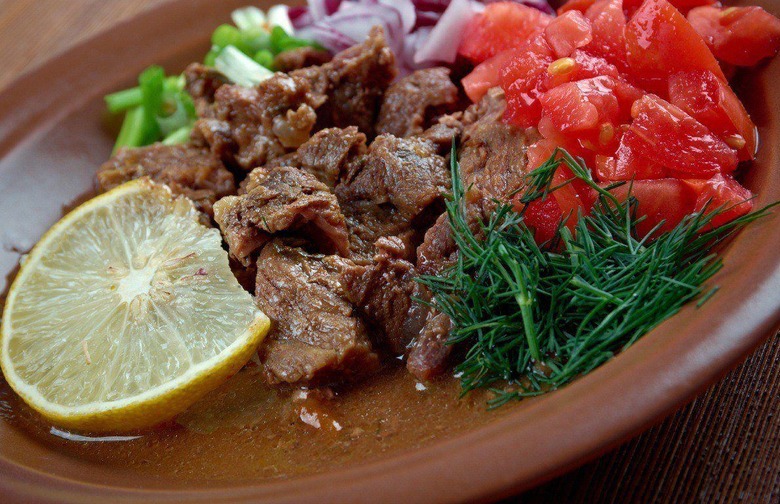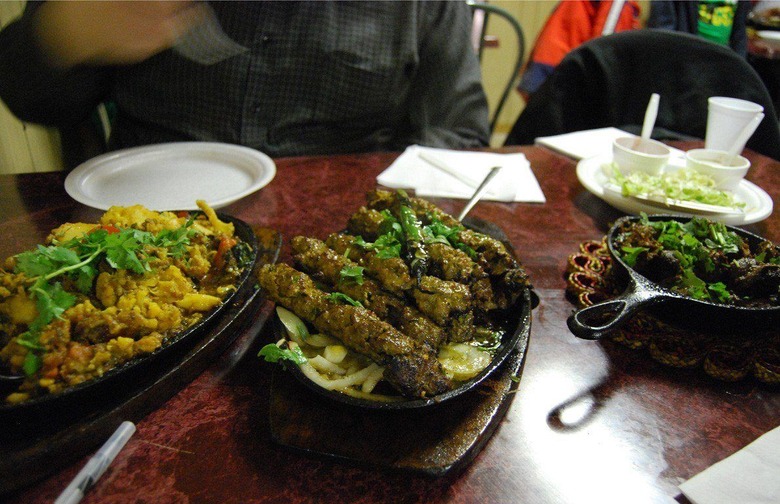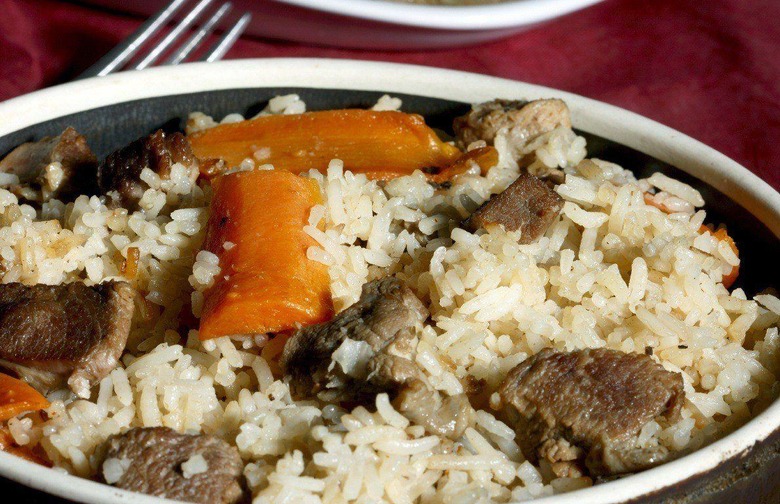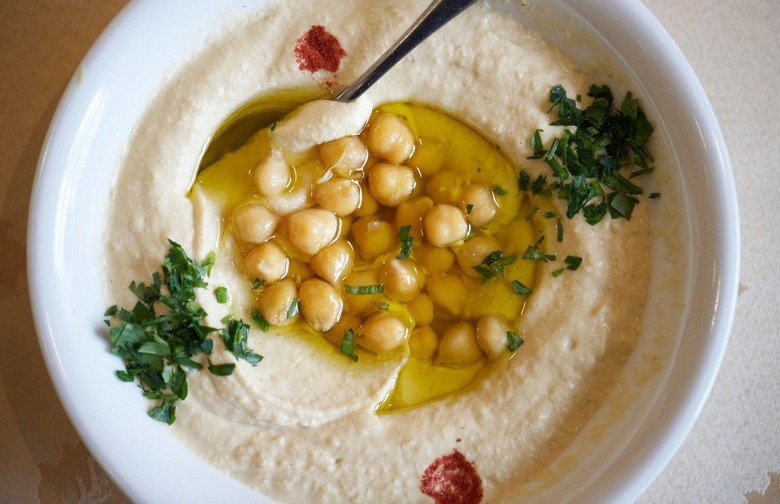The World's 25 Most Dangerous Food Destinations Slideshow
The unfortunate truth is that places with some of the most breathtakingly beautiful landscapes, historic sights, and exceptional food specialties have become known for political unrest and violence. But adventurous travelers willing to brave danger will usually be the first to tell you that their culinary discoveries — be they at roadside stands or meals shared with those less fortunate — are often better and more memorable than any five-star experience you could pay for at home. Of course, caution is essential, and nobody is suggesting that you risk personal safety for food or take lightly the political, social, military, and economic issues and natural disasters affecting dangerous areas. But should you be curious, or find yourself in one of these places, consider that you just may find yourself stumbling across, if not the best, perhaps some of the most underrated great food in the world.
#25 South Africa
The famous "Gatsby sandwich" is a soft, foot-long roll stuffed with meat or fish, French fries (a.k.a. "hot chips"), and a spicy sauce. If you plan on traveling to Cape Town, try The Test Kitchen, Luke Dale-Roberts' restaurant serving eclectic, international cuisine. Listed as "one to watch" on the World's 50 Best Restaurants list by San Pellegrino and Acqua Panna, this eatery serves standout dishes such as plum-cured foie gras, morel-glazed sweet breads, and duck liver and morel "royal" with onions.
#24 Thailand
Following the May 2014 military coup, Thailand became a nation of civil unrest. After the Royal Thai Armed Forces dissolved the government and senate and established a military dominated legislature, the country came under martial law. Thailand may seem a dangerous place to visit, but for the foodies who know better, this country is home to some of the most scrumptious food — especially street food — in the world. Marketplaces overflow with colorful foods, fragrant spices and noodles, and classic dishes like pad Thai or tom yam goong (a type of soup with shrimp, shallots, fish sauce, lemon grass, chiles, and more). Some of the best street food markets can be found in Chiang Mai, a Northern culinary capital that is set on the outskirts of the Thai jungle, with its Prathu Chang Puak night market and its cooking classes a plenty. Bangkok, which briefly enforced a curfew throughout the city immediately following the coup, is teeming with world-class street food as well as world-class restaurants; the city's nahm restaurant was rated number 13 on The 50 Best Restaurants in the World list and was also ranked number three on The Daily Meal's list of the Best Restaurants in Asia.
#23 Uganda
Uganda is riddled with violent crime and human rights violations, political and social unrest, and armed terrorist groups. Although the country is torn by conflict, it is also home to a unique food scene for the adventurous traveler looking for a thrilling culinary experience. Ugandan cuisine centers on stews of beef, chicken, or fish steamed in banana leaves, sesame paste (known as sim-sim), plantains, and groundnuts (which are an everyday staple of peanuts eaten with smoked fish, vegetables, or meat).
#22 Nigeria
In July 2014, laboratory tests positively confirmed the first case of Ebola in Lagos, Nigeria, Just a few months later in October, the World Health Organization declared Nigeria, which is Africa's most populous country, free of Ebola after six weeks of no newly reported cases. Though Nigeria may be a success story of how Ebola can be controlled, the country it still not a safe destination for travelers heading to West Africa. Nigeria is said to be "a textbook example of what an oil-cursed country looks like," as it is rife with social and political turmoil due to its valuable petroleum reserves. The country's instability has led to gang violence, drug trafficking, and crimes that make the country a dangerous place for travelers. Like many other African nations, Nigeria's food scene borrows influences from neighboring countries in West Africa that make for a cuisine that is fragrant and spice-filled. Meals are often served with plenty of locally sourced fruits and consist of simple but delicious ingredients such as plantains, beans, yams. One classic Nigerian dish is suya, which is a grilled meat that is similar to a shisk kebob and is prepared on a skewer. The meat is slathered in chile pepper and other spices, rubbed with chile pepper and other spices. Egusi soup – or a soup thickened with ground seeds and contains leaf vegetables including spinach, tomato, and okra; chicken, beef, goat, shrimp, or crayfish; and is seasoned with chile, peppers, and onions – is a soup that is also popular in parts of Nigeria.
#21 Ethiopia
Ethiopia is plagued by robberies and large plots of landmines, and the capital, Addis Ababa, has been the site of terrorist bombings. Despite the risks, Ethiopia's renowned cuisine is not to be missed. The national dish, called wat, is a spicy stew accompanied by injera, a large pancake-like bread made of teff flour and water. Teff is unique to the country, grown only on the Ethiopian highlands. The main ingredients in wat vary, and can be anything from chicken, beef, or lamb to vegetables, lentils, and ground split peas. According to The New York Times writer Danielle Pergament, a good place to try traditional injera in Addis Ababa is the restaurant Habesha, a traditional hut with colorful ceiling murals. The specialty of the house here is injera with mixed-vegetable wat.
#20 Dominican Republic
The threat of danger might not always come to mind when dreaming of the beautiful beaches and ecotourism of the Dominican Republic; however, its dark side rests in its illegal import/export flow of cocaine and weapons. Yet for those who venture to this small island, the food is a unique combination of Spanish, African, and Middle Eastern Influences. With dishes similar to that of neighboring Cuba and Puerto Rico, classic Dominican Republican dishes include quipes (a fried finger food filled with meat, spices, olives and more), sancocho (a classic Latin soup filled with various meats and vegetables), and mangu (a hearty breakfast of boiled plantains, fried cheese, fried eggs, and salami).
#19 Colombia
In 2011, Colombia was rated the fifth most dangerous country in the world due to its frightening mortality rate of over 30 deaths per 100,000 citizens per year (according to Colombia Reports), but in recent years this oft-overlooked country has been rising in popularity. Travelers now flock to Colombia in search of pristine beaches, colorful old cities, and fantastic cuisine — particularly in Cartagena — that takes ingredients from the sea for fresh ceviche, fried red snapper, and locally handmade arepas con huevos. In addition to its cult following for arepas and other street food specialties, Colombia is also cooking up quite the impressive culinary scene in restaurants around the country. Venues including Bogotá's Criterión, Harry Sasson, El Cielo, and Leo Cocina y Cava are among some of Colombia's most notable restaurants.
#18 Guatemala
Guatemala is said to have one of the highest crime rates in Latin America. Yet despite the crime rate, most travelers have seamless visits to this charming country so long as they remain savvy and street smart when venturing throughout the cities. Why bother facing the risk? Well, Guatemala is home to a thriving food scene that includes countless varieties of tamales such as tamales colorados (a corn-wrapped tamale stuffed with tomato, red peppers, meat, and olives); tamales de elote (made of sweet corn, sans meat); and the ever-popular pachas (a type of tamale made from potato).
#17 Brazil
Form high-end contemporary Brazilian cookeries like D.O.M — which made it to number two our list of Best Restaurants in Latin America and the Caribbean for 2017 — to bargain street foods, the buzzing city of São Paulo is undoubtedly Brazil's top food destination. Helena Rizzo, who was voted as Latin America's best female chef by Restaurant Magazine, also has her restaurant Mani here. The downside: Brazil's murder rate is more than four times higher than that of the United States, and crime is high.
#16 North Mexico
Visiting northern regions of Mexico — outside major tourist areas — might be risky. The U.S State Department reports heavy drug-trafficking activity, including daytime gun battles, car-jackings, and kidnappings. But two of the "black-listed" regions — Chihuahua and Sonora — are home to some distinctive local dishes. Sonora is the proud origin of the distinctive agave-based liquor bacanora, and Chihuahua's regional cuisine gets its unique touch from dehydrating many products prior to cooking. Chihuahua restaurant La Casa de los Milagros is located in a beautiful 110-year-old mansion with an airy courtyard; the menu features antojitos (Mexican snacks), salads, and mains featuring steak and chicken. Want more? Legend has it that Pancho Villa used to visit the place.
#15 Egypt
The great pyramids might be the main tourist attraction in Egypt, but the rich history and mix of cultures has also made Egypt a real culinary gem. A good example of the unique dishes from multicultural origins is the national dish koshary — a mix of pasta, tomato sauce, lentils, rice, onion, and chickpeas. For the best koshary, Renaissance Hotels "local expert" Salah Nasr recommends Tarek Koshary in Cairo. Since 1950, this place has been serving koshary to locals and tourists alike, and according to Nasr, if you ask any local where to get koshary, "this is where you will end up." Cairo is also the home of the Oasis food court, which was dubbed the largest food court in the world by Guinness World Records in 2011.But while enjoying the variety of food, be cautious. After the 2011 revolution, reports warn of an increase in crimes and sexual assault, as well as the always lingering chance of political protests and demonstrations.
#14 Venezuela
Venezuela might have a bad reputation as having one of the five highest murder rates in the world, but dark crimes aside, the country is a thrill for travelers seeing the world food-first: locally grown, harvested, and roasted coffee and homemade arepas — traditional, pocket-shaped cornbread — stuffed with everything from cheese to meat are just a few of the great foods offered. As it's a big metropolitan city, the Venezuelan capital, Caracas, offers a great variety of both budget-friendly and upscale food options. Chef Carlos Garcia's modern-yet-traditional Venezuelan restaurant Alto is listed as one of the "50 best restaurants in Latin America," coming in at number 28. With an emphasis on simple cooking, his menu includes dishes such as home-cured "ham" of tuna with goat's cheese snow and snapper roe with sweet coconut and "pastel de chucho."
#13 Kashmir Region, India/Pakistan
Split between India and Pakistan, the Kashmir region has become a chaotic hotspot for protests, while riots and bombings are not uncommon either. Terrorist groups are known to operate in the state, and foreigners can easily become targets of crime and violence. When it comes to food, the split between India and Pakistan has led to the creation of a unique regional cuisine, influenced by the best flavors from both regions. Mutton, meat from a mature sheep, is the most common ingredient, on which more than 30 classic dishes are based. Yogurt, oil, and spices such as cardamom and anise seed are typically incorporated in the different stews, served with rice. The spicy potato dish dum aloo is a popular vegetarian dish. According to an article published by Condé Traveler, Ahdoos and Mughal Durbar are two "good places to sample authentic Kashmiri food" in Srinagar, one of the main cities in the Indian region of Kashmir.
#12 Israel
It is safe to say that Israeli cuisine is among the most vibrant cuisine in the world. Israeli food, which can be considered a beautiful mosaic of Middle Eastern dishes, has garnered a tremendous amount of attention due in part to renowned Israeli chef Yotam Ottolenghi. Among the most popular Israeli dishes are shakshuka, shawarma, falafel, hummus, and baba ganoush.
#11 Lebanon
While the potential dangers of traveling to Lebanon are not to be taken lightly, neither are the culinary temptations that the country has to offer. Lebanese food is arguably the most widely known in the Middle East, with traditional dishes such as falafel and shawarma sold in countries around the world. But in the capital, Beirut, a wide range of upscale restaurants have made the city a sought-out destination for fine dining and a buzzing nightlife. At Lux, accessory designer and restaurateur Johnny Farah serves Mediterranean fare, and ingredients are harvested at his own organic farm in the Lebanese mountains. And after establishing locations in London and Paris, Franco-North African Momo opened in Beirut, serving modern and elegant versions of mezze; the restaurant also arranges community events, such as dance parties, at night.
#10 Libya
For those whose appetite for culinary adventures may lead them to disregard any warning, this country is home to a delectable food scene just within its classic staples. Infused with Mediterranean influences, a classic Libyan dish is shorba Arabiya, an "Arabian" soup consisting of onion, tomato, lamb or chicken, and a slew of spices including cayenne pepper, saffron, mint, cilantro, and parsley.
#9 Côte d’Ivoire
Côte d'Ivoire, Ivory Coast, is yet another country stricken by civil war and political unrest, and its capital, Abidjan, is recognized as the third most dangerous city in the world. Street crime, robbery, and car-jackings are common here. But when it comes to finding a taste of traditional local cuisine, the country has plenty to offer. Good places to sample the food are maquis, outdoor markets unique to Côte d'Ivoire. To be considered a maquis, the restaurant must sell braised food, usually chicken or fish, served with onions and tomatoes. Cara Waterfall, writer of the blog bellejournal recommends a maquis called Chez Rokia, where the owner, Rokia, serves people cold beer and dishes such as poulet braisé, grilled chicken marinated in Dijon mustard and garlic.
#8 Ukraine
With Russian forces and pro-Russian groups having established full control in Crimea, Ukraine is in political turmoil. Cancelled flights to and from Simferopol, a city on the Crimean peninsula, have resulted, but it may be worth looking for alternative routes. Although the country is in the eye of a political hurricane, Ukraine is home to beautiful architecture and a stellar culinary scene that represents the country's rich culture. From herring and onions, potatoes, and pickles to caviar and pancakes, Ukraine's cuisine takes on many influences from its conflict-driven neighbor, Russia.
#7 Yemen
You should really not be in Yemen, even on a visit. The U.S State Department is clear with the message, as terrorist activities and civil unrest have pushed the security threat level to "extremely high." But for daredevils, Yemen can also provide plenty of unique food experiences distinct from the more commonly known Middle Eastern flavors. Simple stews and breads might not sound intriguing, but spices such as ginger, cardamom, and aniseed give Yemeni food a unique aromatic touch. Each region has a slightly different version of the national dish, saltah, which is a meat stew with chiles, tomatoes, garlic, and herbs, usually mixed with potatoes, scrambled eggs, or even rice. Chicken, goat, and fish are other typical proteins, and dairy products, such as butter and cheese, are rarely used. The capital, Sana'a, is home to restaurants which serve everything from high-end cuisine to budget eats. Freelance journalist Adam Baron, based in Sana'a, recommends Matam Taiz for the peculiar Yemeni specialty aseed, a doughy dumpling of fish meal covered in gravy.
#6 Somalia
With ongoing bombings and terror attacks, the U.S. State Department recommends avoiding all travel to Somalia. However, the capital, Mogadishu, had been going through a significant change toward becoming a safer travel destination. Although new top restaurants continue to open up in the city, a recent backlash indicated that the terror threat is still present. A car bomb that killed 18 people in the capital also destroyed one of the new restaurants, opened by native restaurateur Ahmed Jama. Jama had opened his restaurant The Village in an effort to showcase the great cuisine and culture of his home country, serving traditional Somali dishes.
#5 Sudan
Wracked by poverty (with a fifth of its citizens living on less than $1.25 a day), the Sudan is one of the more dangerous countries in the world; however, it is also home to an ethnic cuisine that pulls in influences from multiple countries for a uniquely delicious culinary tradition. Sudanese food is rooted in African heritage but incorporates flavors from Egypt, Yemen, India, and Ethiopia, resulting in vibrant dishes packed with flavor and spices. Stews exist in excess in the Sudan, where the belief "less is more" when it comes to a good meal reigns supreme.
#4 Pakistan
Pakistan, with its presence of both Al-Qaeda militants and the Taliban, is a country that has long experienced violence and terrorist threats against civilians, government officials and agencies, and foreigners. The State Department has warned that U.S. citizens defer all non-essential travel to Pakistan given the large number of terrorist attacks throughout the years as well as the ongoing security threats that plague the country. Yet the danger may not be enough to keep some culinary risk-takers away. Pakistan is known for its rich, flavorful food and is also known for being aromatic and spicy. Some of Pakistan's most delicious dishes include its meat dishes, which is typically cooked in a stew or with legumes and rice – particularly Basmati rice – and can also be served shishkebob style on a skewer. The most popular meats in Pakistan are goat and mutton, though chicken and beef can also be found in many dishes. Curries, including the beloved meat and potato curry known as aloo gosht, are also common in Pakistan, and they can be prepared with meat and vegetables.
#3 Iraq
The U.S Department of State reports that some violence and threats against U.S. citizens persist in Iraq, and U.S. citizens visiting the country are still at risk for kidnapping. Still, Iraq has a cuisine that is definitely worth trying. Strongly influenced by the cooking of neighboring Iran and Turkey, Iraqi food includes many kebabs and other beef and lamb dishes, as well as stuffed vegetables and filo-dough pastries. Iraqi Touch in Erbil serves homemade Iraqi food in a "unique and modern environment" showcasing the best of Iraq's classic cuisine with menu items such as beef borek — ground beef stuffed in filo dough — and different sauces served with rice, such as curry potato gravy.
#2 Afghanistan
Travel Warning for Afghanistan cautions U.S. citizens against visiting, as the risk of kidnapping and terror attacks remains high. But when it comes to food, Afghanistan has plenty of flavorful dishes to offer. The country is known for its variety of kebabs and pulao, rice cooked with meat, chicken, or vegetables. In the Bamiyan region, the main bazaar in Shahr-e Nau has a good variety of food vendors offering traditional cuisine such as kebabs, pulao, and the beef and bean soup known as shorwa.
#1 Syria
Between the ongoing civil war, violence, and threat of terror attacks and bombings, visiting Syria is highly dangerous, and should be avoided. But despite the current unrest, Syria is still famed for its culture and cuisine, and in 2007 the capital, Aleppo, was awarded a cultural gastronomy prize by the International Academy of Gastronomy in Paris. The regional cuisine blends Mediterranean and Middle Eastern flavors, and includes many varieties of kebab halabi, or spiced kebab, traditional mezze dishes such as hummus and baba ghanoush, many preparations of artichokes, and za'atar, a dried herb and spice mixture, often eaten by dusting it on bread and dipping the whole thing in olive oil. According to Khaled Yacoub Oweis, writing for Reuters, the best place to enjoy za'atar is restaurant Qubrusi in Aleppo, which "is a favorite among locals." Another restaurant well worth a visit is Beit Sissi, rated as "Aleppo's finest" by Lonely Planet. Located in a restored seventeenth-century house, the restaurant serves French and Syrian cuisine including items such as sujuk, spicy pork sausage rolled in bread, and ratatouille.

